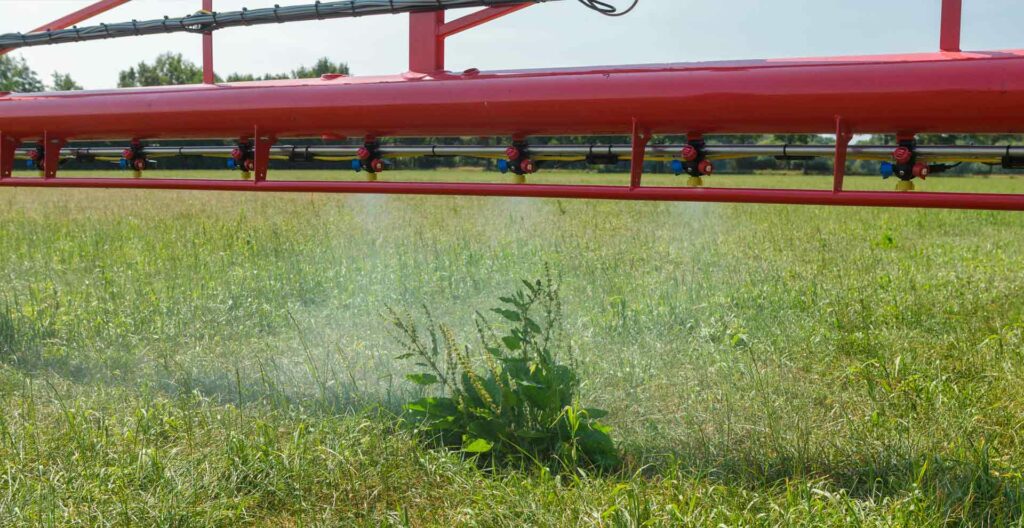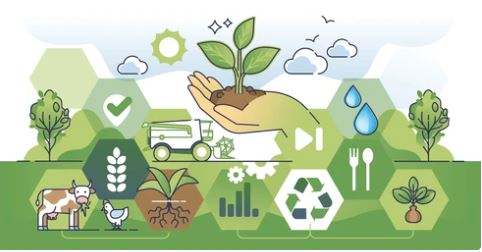Regen and Tech – Hand-in-Hand
Written by Daniel Davies, Arable Division at Lower Pertwood Farm – Nov 2023
The concept of regenerative agriculture is continuing to gather momentum across the globe. To me, it is clear that technology is going to play a bigger part than ever in farming, as methods continue to change and evolve to embrace this new farming concept with its exciting market potential in the years to come.
There is much talk at the moment surrounding the lack of an official definition for regenerative agriculture, and what (if anything) may be done to produce such a definition. A big part of the regen appeal to farmers is the wide spectrum of approaches that can be adopted in the regenerative farming system. Rigid rules and regulations deter farmers from adopting the organic Farming system, depriving the farmer of necessary inputs and ultimately preventing their rigid system from being able to function.
Regen is taking off fast because this lack of prescription allows farmers the opportunity to try out new ideas and concepts, whilst still being able to do what they need to in the near term to maintain a functioning profitable enterprise. This is a positive step, because farmers can go at their own pace, introducing change that works for them. In time, these continued changes can move us towards farming systems which exercise better practices not only for the production of better quality and healthier food, but also for the environment.
In my day-to-day, there are two areas – crop establishment and crop protection – where the role of tech in the regen journey is obvious.

Starting from the beginning: crop establishment. I have always taken issue with ‘blanket’ systems, i.e. we plough everything, or we cultivate, or we direct drill. This doesn’t do the crop, the bank account or the environment any favours. The idea behind regen is to produce good quality, healthy food with minimal negative impact and a central objective of soil restoration. With our winter wheats across the farm this autumn we have covered all methods, from ploughing and power-harrowed, to min-till cultivations, and direct drilled crops, all dependent on the conditions on the ground. We are fortunate to have a variety of cultivation equipment at our disposal to be able to do this, however the jewel in our crown here is our drill.
We run a Horsch Avatar, and to me this machine fits the regen model to a T. Flexibility is the name of the game here, because being able to do what a unique set of circumstances dictates at the time can be the difference between the success and failure of a crop, and what may previously have required several passes with multiple machines, if possible at all, can now be achieved in one pass. The precision metering technology and accurate depth control allows us a huge range of options when it comes to drilling, and the option of applying small seeds, slug pellets or Avadex to the surface on the back often saves time and money from additional passes and in some cases gives us the ability to apply these products at all when weather windows are tight.
Many regen concepts, such as bi-cropping, have been around for years, but being able to do this in one pass with one machine not only makes previously unviable options possible, but can bring about added benefits to the ground and the environment. These include reduced compaction from a lesser number of passes, and specifically in the case of bi-cropping providing a greater variety of species in a field for wildlife to take advantage of.

Moving on from establishment, we look at crop protection. Here we enter a new arena which has seen a real desire for change in recent years, as the environmental pressures to reduce chemical usage increase. A need to cut costs also plays a big part of this. Whether looking at mechanical weeding options, such as spring-tine harrows, or inter-row cultivators, or spraying and fertilising technology, there are many avenues where tech can make these practices possible for farmers.
It really doesn’t matter whether your stance is an environmental or financial one, if there is an option to save 50% or more chemical usage (with some boasting even bigger savings than that), whilst maintaining yield, any farmer would jump at the chance. Spot spraying is something which I personally am very interested in, and I think it is inevitable that it will eventually become mainstream. The use of cameras on the sprayer booms to identify upcoming plants, and then treating only those areas necessary, has got to be the way forward. Why spray an area when the chemical is being wasted, landing on non-target species which don’t need it?
This is another part of the regen approach that I can really get behind, because it is sensible from both ideological and practical standpoints and has historically been an area where organic has proven impractical. If regen can bring about a precision middle ground whereby chemical application is reduced to only target species, it is a strong step in the right direction.
Now more than ever, farmers have to look very hard at their costings, and make savings wherever possible. If technology can help to do that for them, then it can only be a good thing. Any new technology is expensive, and justifying the costs of these progressions will take time. If farms can gradually alter their practices, and each time they replace a piece of equipment look seriously into the options available to them, the advantages of flexible and precision tech described above should result in long-term savings, making the transition worthwhile.
Over the next 10-15 years, I don’t think we are going to have any choice but to adapt and review our methods. As with every other industry, technology is going to play an ever-increasing part in our day-to-day work, challenging methods which have sat pretty steadfast for a number of years. Outside of agritech, the ever-increasing presence of social media with its access to global communications is allowing what we do as an industry is becoming ever-more publicised. This digital ecosystem brings accountability, and is a chance to show that we are committed to moving forward. It is also a learning opportunity, where we can see how farmers, researchers, input producers and equipment manufacturers are rising to the regen challenge while continuing to produce excellent quality, healthy food.


